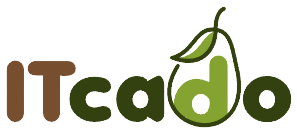Performance Marketing Experts

Our Performance Marketing Latest Projects
Services

SEO and Content Marketing
SEO and content marketing work synergistically to enhance online visibility, attract organic traffic, and engage audiences through valuable and optimized content.

Google Ads (PPC)
Google Ads (PPC) empowers businesses to reach their target audience by displaying ads on Google's search results and partner websites, with advertisers paying only when users click on their ads.

Bing Ads (Microsoft)
Bing Ads (Microsoft Advertising) is a platform for displaying ads on the Bing search engine and other Microsoft-owned platforms, offering a PPC model similar to Google Ads.

Facebook & Instagram Ads
Facebook & Instagram Ads enable precise targeting and engaging visual content to promote products and services across both social media platforms.

TikTok Ads
TikTok Ads leverage short-form video content to reach and engage a diverse user base on the popular social media platform.

Email Marketing
Email marketing involves sending tailored messages to subscribers' inboxes, fostering customer relationships and driving conversions.

SEO and Content Marketing
SEO and content marketing work synergistically to enhance online visibility, attract organic traffic, and engage audiences through valuable and optimized content.

Google Ads (PPC)
Google Ads (PPC) empowers businesses to reach their target audience by displaying ads on Google's search results and partner websites, with advertisers paying only when users click on their ads.

Bing Ads (Microsoft)
Bing Ads (Microsoft Advertising) is a platform for displaying ads on the Bing search engine and other Microsoft-owned platforms, offering a PPC model similar to Google Ads.

Facebook & Instagram Ads
Facebook & Instagram Ads enable precise targeting and engaging visual content to promote products and services across both social media platforms.

TikTok Ads
TikTok Ads leverage short-form video content to reach and engage a diverse user base on the popular social media platform.

Email Marketing
Email marketing involves sending tailored messages to subscribers' inboxes, fostering customer relationships and driving conversions.
SEO and Content Marketing


Google Ads (PPC) Marketing
Bing Ads (Microsoft)


Facebook & Instagram Ads

Email Marketing
TikTok Ads

Frequently Asked Question
Remember, the effectiveness of a multi-channel marketing strategy depends on understanding your target audience, their preferences, and the unique strengths of each communication channel. Flexibility, adaptability, and a customer-centric approach are key to successful multi-channel marketing.
